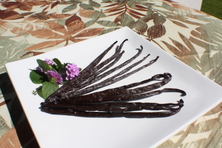Hoagies, Submarine, Hero, Grinder, Muffaleta ....
an Italian Sandwich by any of these names...

For a client I have been working on designing an Italian sandwich that would work well in their store. When I did research I became more and more fascinated.
What exactly is an Italian Sandwich?
When we think of Italian sandwiches, great memories of wonderful Genoa and hard peppery Salami's and other tasty cold cuts like Mortadella, Capicolla with Provolone cheese on crispy french bread with a good Italian dressing, lettuce, tomato and maybe other spicy condiments like olives,red onion and pepperoncini.
Is this only an Italian Thing?
The use of tasty cured meats is not unique to Italians but a great deal of Europe, A great crusty roll with savory charcuterie has been as much a traditon in France, Germany, Poland and other countries as the hamburger and fries has to the U.S.
Historically cured meats were very important in any country that had long winters and no real refrigeration. it had to last for months when you couldn't farm or hunt.
I have seen many Europeans have this meal for Breakfast. Although not like a Hoagie, or Hero, or grinder but more like an open face sandwich, with cold cuts and sausages in the center of the table and you grab a slice of bread or a roll and pile some on.
In the U.S. it bacame more of a lunch item. Perhaps during the industrial revolution construction workers needed a good sized lunch for fuel as they built submarines, buildings, and infrastructure that made the modern western world.
How did they come up with the name Hoagie?
So what is with the name Hoagie? A Submarine sandwich you can imagine looks like a submarine, a Hero, perhaps it takes a hero to finish some of the foot long high piled sandwiches, and even a grinder you have to grind through it. What is a Hoag?
Well a Hoagie is definitely a Philadelphia thing.
Depending on who you talk to in Philadelphia the stories vary, as most any legendary food does.
From the website "Phillybite"
According to a 1967 article in American Speech, the word “hoagie” was first used in the late 19th or early 20th century among the Italian community in South Philadelphia. In those days, “On the hoke” was a slang term for a poor person. Deli owners would give away meat and cheese scraps on a long roll called a “hokie,” but Italian immigrants pronounced it “hoagie.”
The Philadelphia Almanac and Citizen’s Manual tells of early 20th-century street vendors named “hokey-pokey men,” who sold antipasto salad, meats, and cookies. When Gilbert and Sullivan’s opera Pinafore opened in Philadelphia, in 1879, bakeries produced a long loaf called the pinafore, and the enterprising hokey-pokey men sliced it in half, filled it with antipasto and sold it as the “hoagie.”
In 1925, a Chester couple opened the A. DiCostanza grocery store, which stayed open past midnight to accommodate gamblers. One night, a hungry card player walked to the back of the store when Catherine DiCostanza was cooking peppers and asked if she would make him a sandwich. She asked what kind of meat he wanted, and he said, “Put everything you have in the case in it.” She took a loaf of Vienna bread and sliced it open and stuffed it. He asked her to put some of her peppers in too. He left, and an hour later, the place was full of hungry gamblers asking for the same kind of sandwich, which would later be known as the hoagie.
starting around the depression in the 20's maybe?
Hoagie "It is an article of faith here, though no one can prove it, that hoagies started in South Philadelphia and spread. The most prevalent explanation for the name is that they were the regular lunch fare of Italian-American workers from South Philadelphia in an old shipyard at Hog Island in the days before the area became the site of the city's airport. There, according to the tradition, the sandwiches were called hoggies, a word that was eventually corrupted. There are heretics who say the first hoagies were made in Chester, about 10 miles south of here, but that doesn't bother Antoinette Iannelli. ''I don't know anything about that,'' she said the other day. ''All I know is that I made the first hoagie in Philadelphia.''

Workers reading the Reading the Hog Island News
In support of her claim, she has a sign above the door to her South Philadelphia lunch counter and grocery store, right under the name Emil's, reading ''home of the original hoagie.'' Mrs. Iannelli, a small, brisk woman who will be 73 years old this month, punctuated her words with vigorous stabs at her cash register, which she has commanded for decades, since Emil, her husband, decided to return to his native Italy. It was about 50 years ago, she said, that she and Mr. Iannelli moved here from Maine, looking for work. Finding none, they opened a fruit stand with a meat case on the side. One morning, she said, a young police officer came in saying he had had a fight with his wife and she had refused to pack his lunch. He asked Mrs. Iannelli to make him a sandwich. She cut a loaf of Italian bread in half, she said, packed it with meats, olives, onions, lettuce and tomatoes and mixed a sauce to keep it moist. ''Lo and behold,'' said Mrs. Iannelli, ''that was it. The next day that policeman was back saying 'Antoinette, fix me one of those sandwiches for the captain.'
The day after that the whole street was lined with police cars.'' Soon, she said, she was sending hoagies all over South Philadelphia, and, when World War II started, out to the shipyard. Then she offered a mild heresy of her own. The idea did not come from this area at all, she said. ''I remembered seeing a sandwich like it made in Maine, by a woman from northern Italy, and she had seen them made over there,'' Mrs. Iannelli said." ---"ABOUT PHILIDELPHIA," William Robbins, New York Times, Aprril 17, 1984, (p. A14)
"Settlers from Naples, Sicily, Calabria and Abruzzo poured into South Philadelphia in the 1880's and 1890's, and in the 1950's singers like Mario Lanza, Frankie Avalon, Fabian and Bobby Rydell sprang from these hard streets...According to those who have explored the murky recesses of local food history, hoagies owe their name to the Hog Island shipyard on the Delaware River. During the Depression, or so the story goes, construction workers there used to buy Italian sandwiches from a luncheonette operated by one Al DePalma, who called them ''hoggies.'' Time changed the name to hoagies.
Hoagies are not fundamentally different from New York's heroes or Boston's grinders or Everytown's submarines. Call them what you like, but Philadelphia must eat more per capita than anyplace else, and in a city where almost everybody, including Wawa convenience stores, fills eight-inch-long bread rolls with cold cuts, South Philadelphia fills them better than anyone. The bread is the key to quality. So who better to make a great hoagie than a great bakery? That would be Sarcone's, a fixture on Ninth Street, which a few years ago opened a tiny deli a few doors away. Its Old Fashioned Italian (Gourmet) hoagie is a minor masterpiece. A roll with a crunchy seeded crust and a soft, yet densely chewy, interior provides a solid base with plenty of absorptive power. Both are sorely needed after they pile on the prosciutto, coppa, spicy sopressata, provolone, oregano, tomatoes, onions, hot peppers, oil and vinegar." ---"In Hoagieland, They Accept No Substitutes," R. W. APPLE Jr.., New York Times, May 28, 2003, (p. F1)
"Phillufia, or Philly, which is what we kids called the city, was where the epicurean delight made with cold cuts, cheese, tomatoes, pickles, and onions stuffed into a long, hard-crusted Italian bread loaf was invented. The creation of that sandwich took place in tile Italian pushcart section of the city, known as Hog Island. Some linguists contend that it was but a short leap from Hog Island to hoagie. while others claim that the label hoagie arose because only a hog had the appetite or technique to eat one properly." ---"What Did You Say?," Richard Lederer, USA Today, July 2009, (p. 52)
|







